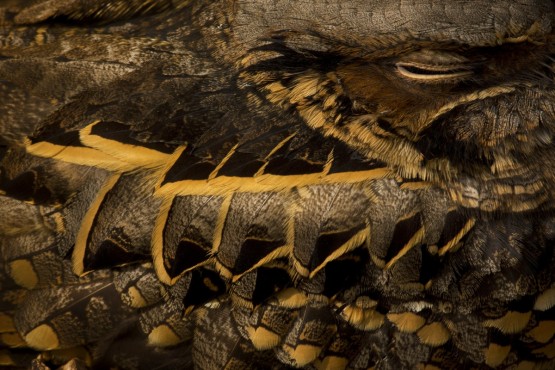The Royal B.C. Museum is hosting the 50th anniversary of the Wildlife Photographer of the Year exhibit. The event is sponsored by The Natural History Museum, London, and co-owned by BBC Worldwide, and features over 100 backlit images with nearly 42 000 submissions from 96 countries.
The exhibit is broken down into specific categories with several finalists and one winner. The 50th anniversary included new installments like TimeLapse, Adult Portfolio, and People’s Choice award categories. The youth category is divided from ages 15–17, 11–14, and 10 and under. Don’t let age fool you—some of the best shots were from the youth category.
Each photograph has a synopsis from the photographer discussing environmental conditions, exposure information, and lens choice. Don’t be confused by the nationality of the photographer with where in the world the picture was taken—one photograph featured a yawning cheetah resting on a tree with “New Zealand” in the photo caption. After a double take, I realized the photographer was from New Zealand, and the photo was taken in Africa. I don’t know about you, but I don’t remember any cheetahs in the Lord of the Rings series.
One category showcased a documentary series titled The World in Our Hands which caused the most chatter among fellow museum patrons. One photo, “Sea of Death”, taken by Paul Hilton, features a dock covered in bloody shark fins. Hundreds and hundreds of fins are sorted into neat piles for shark fin soup—a delicacy. The photo caption highlights the fact that over 100 million sharks are killed for their fins every year. Another photo shows a skinned lioness with the skin being cleaned beside the hanging body for whoever pays the most for it.
On a lighter note, British Columbian photographer Jess Findlay was a finalist in the Earth’s Diversity Birds category. Findlay took a close up shot of a sleeping common pauraque at Estero Llamo Grande State Park in southern Texas. I’ve never seen a close up photograph of the intricate patterns of brown, black, and gold feathers. Taking a glance at the photo, I fooled myself into believing it was an owl, but seeing isn’t necessarily believing.
Most of the photos throughout the exhibit had a mysterious allure to them. I did a double take of nearly every photo, including one with liquid magma oozing from an active volcano into the ocean. Some shots are so spectacular, they don’t even look real. No images were altered, though colour and saturation could be edited.
One qualm I had about the exhibit was some of the photographers used food to bait the animals they were hoping to capture. The captions on the photos would explain how each photographer captured the photo and quite a few were captured because the photographer scattered food around. This may be my own bias from growing up in Whistler with strict warnings not to feed wild animals. I wonder that if the exhibit’s focus is on wildlife, is it not contradictory to have photographers feeding animals for the perfect shot? It makes me think about the 40 000 other photos that may have been taken without the help of food and didn’t make the cut.
However, qualms aside, most of the photos in the Wildlife Photographer of the Year are awesome and remarkable. It is a rare treat to see aspects of nature from different perspectives. I highly recommend the exhibit so you can form your own opinions about these fascinating shots, and may it inspire you to pick up a camera of your own.
The Wildlife Photographer of the Year runs at the Royal B.C. Museum until April 6.









